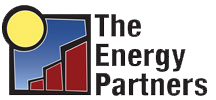Building Envelope Energy Modeling
The Energy Partners has developed an energy model using ASHRAE and NREL formulas to calculate the potential savings for energy conservation measures discovered during our energy audits. The model can tell us the savings potential for improving both thermal and air leakage performance of our buildings.
We utilize data from your climate and building to create a realistic model of the operating conditions and baseline efficiency and resulting effects of modeling ECM improvements.
Next we evaluate the cost to implement improvements and resulting payback, providing your with a complete analysis of the investment that you are making in your building or portfolio.

Energy Savings
All energy conservation measures identified by team of building scientist in the course of our energy audits are modeled to determine financial viability. We provide a detailed analysis of cost per measure, per building, and for the total project. Annual energy savings are compared to estimated measure cost to determine a simple payback. We present you full all the measures that are financially viable according to your project requirements.
Detailed Audit Reports
Our investment grade building envelope audit reports breakdown all the findings from our energy audit and provide detailed analysis of our energy modeling. The report explains the building science behind our envelope recommendations and includes feedback from our production team on the best way to implement the project. Our reports show that envelope energy improvements improve your bottom line through decreased net operating cost.
Decreased Carbon Emissions
A better bottom line, also comes with environmental benefits. Decreased energy usage means decreased carbon emissions. We can perform calculations to determine the amount of carbon offset as a result of making investments in energy conservation measures for your building. If your jurisdiction requires reporting greenhouse emissions related to new projects, we can help.
Energy Modeling Variables
Air Leakage Pathways
Gaps in the Envelope Thermal Boundary
Operating Hours
Bin Climate Data
HVAC System Age and Efficiency
Utility Rates
Ventilation Schedules
Ready to Improve your Building?
Contact us today to discuss your building or project.
